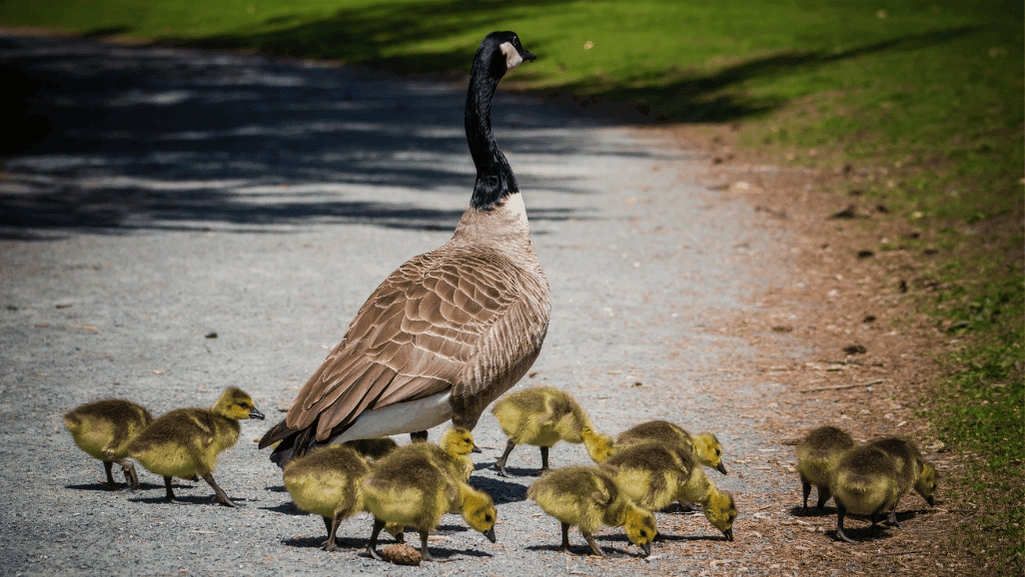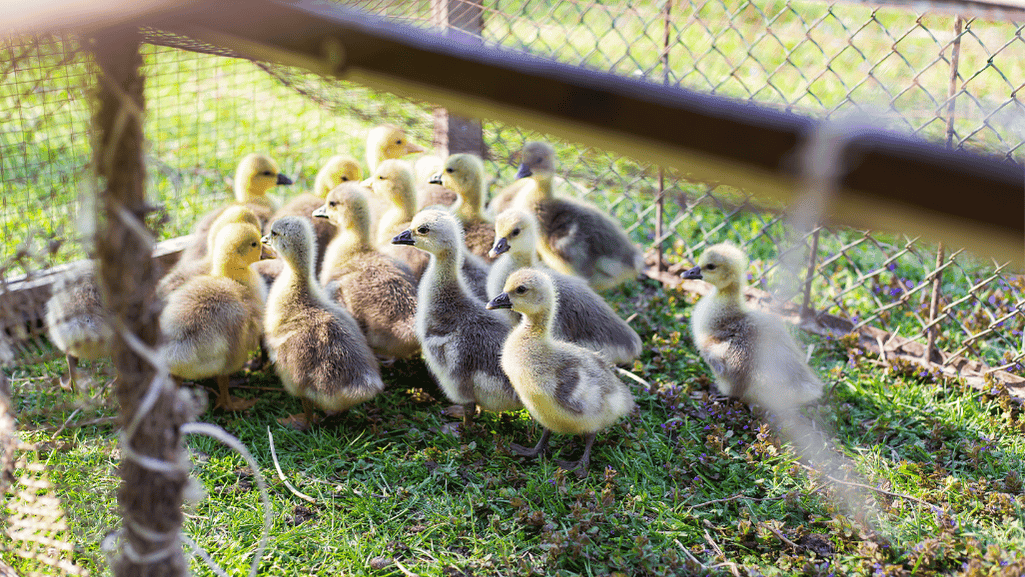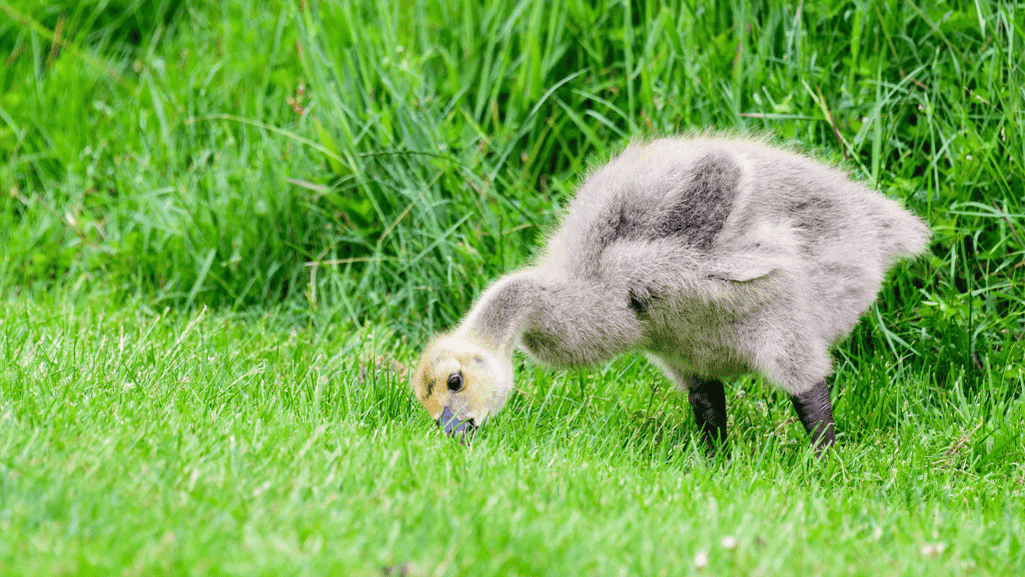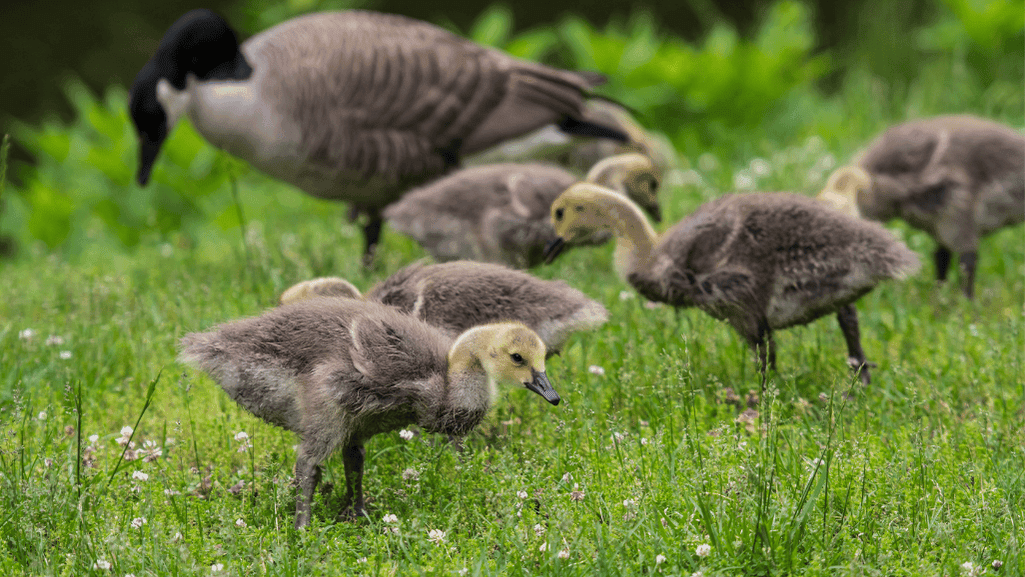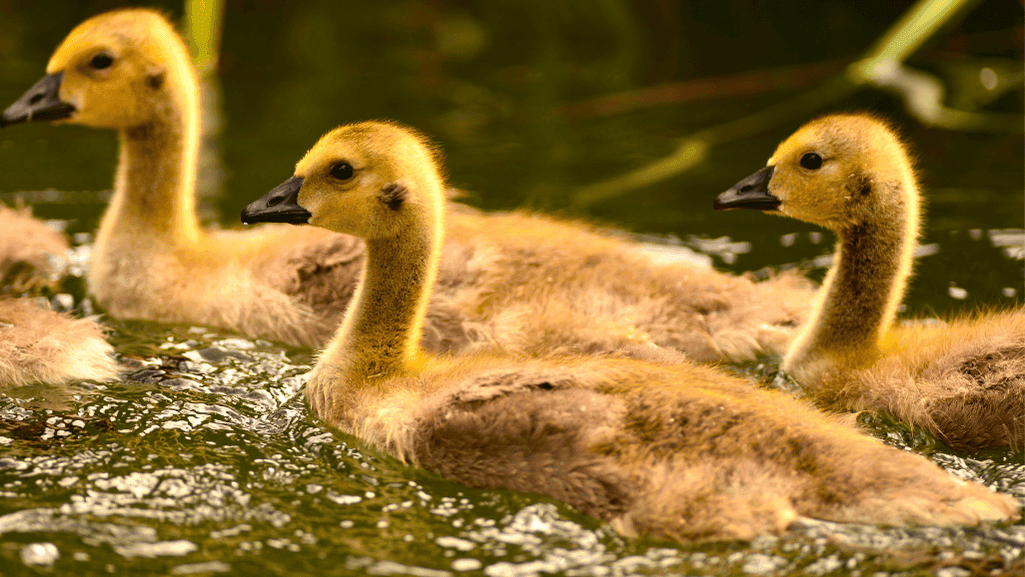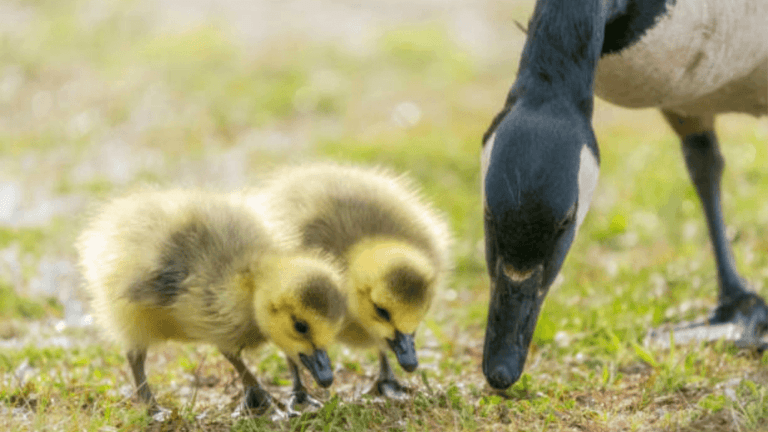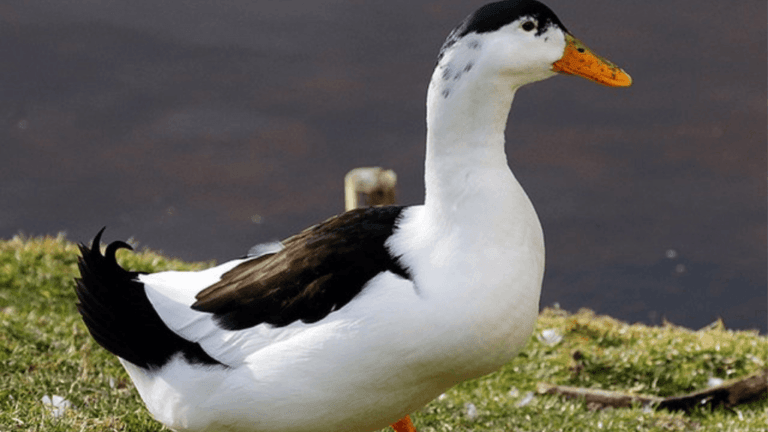Starting the journey of baby goose care is more than just loving their cute looks. It’s about making a safe space for them to grow. Whether you live in the countryside or have a big backyard in the city, nurturing a gosling needs a special plan. You’ll need to make sure they always have fresh, shallow water to drink.
Building a shelter that keeps them warm and clean is also key. In the early days, remember that goslings aren’t waterproof until they’re about six weeks old. So, watch them closely when they’re near water.
Creating a safe place for them to move around is important. This helps them grow strong and stay healthy. Knowing what they need to eat and how to care for them is just as important. Making their home feel like the open fields and ponds they love is essential for their happiness. For more tips on raising these amazing birds, check out this guide from experienced bird keepers.
Key Takeaways
- Providing a safe, shallow water source is necessary for goslings to stay hydrated without choking risks.
- Specialized shelter should be draft-free, well-ventilated, and consist of non-slip and dry bedding.
- Monitoring the goslings closely until they develop waterproofing is essential for their survival.
- A balanced diet, including supplemental food and grit, is required for goslings’ nutritional needs and proper digestion.
- An understanding of geese’s social needs and habitat preferences is critical for raising a happy, healthy young goose.
- Maintain a secure and loving environment to foster growth from goslings into thriving adult geese.
Understanding Baby Goose Behavior
Learning about baby water bird behavior is vital for their growth. Young birds show behaviors that match their instincts and needs. This knowledge helps in their healthy development.
Social Needs of Baby Geese
Gosling social needs are very important. They are social from the start and love to be in groups. Being with their mother and siblings makes them feel safe and helps them learn social skills.
It’s important to make sure they have enough social interaction. This is key for their emotional and physical health.
To learn more about raising domestic geese, check out poultry books. They offer a lot of useful information.
Common Behaviors to Expect
- Feeding behavior: Goslings use their beaks to sift through water for food, a method called ‘shoveling.’
- Playful antics: They love to splash and make messes, showing their curiosity and learning important skills.
- Communication: They start with peeping and grow to make more complex sounds. Understanding these helps in meeting their needs and building strong bonds.
It’s important to know and respond to these behaviors. By understanding young goose behavior, you can give them the care they need. This care should match their natural instincts and needs.
Setting Up the Ideal Habitat
Creating the optimal habitat for baby geese requires careful planning. It must meet their needs from birth to adulthood. The goal is to make their living space as natural as possible while adding necessary human touches.
Choosing the Right Space
The Catskill Animal Sanctuary suggests an indoor shelter of at least 8’ x 10’. This space should be at least 6 square feet per bird. It must be safe from predators, like weasels, which can fit through small gaps.
So, it’s important to cover all openings larger than a quarter. You can also use bungee cords or a 3-step locking system to keep out raccoons.
Temperature and Ventilation
Keeping the temperature right is key for young geese. They need a steady heat source as they grow. The temperature should slowly get cooler as they get older.
Good ventilation is also important. It helps prevent moisture and ammonia buildup. This is bad for the health of goslings. So, you need a system that lets in fresh air without drafts.
Bedding and Nesting Materials
Nesting is important for gosling comfort and health. The Global Federation of Animal Sanctuaries says geese don’t need fancy nesting boxes. But, they do need clean, non-woven bedding like blankets or rubber mats.
These materials help keep things clean and prevent injuries. It’s also important to make sure they’re easy to clean and replace. This is a key part of gosling shelter essentials.
The main goal is to create a safe, caring environment for goslings. With the right setup, care, and maintenance, it’s a rewarding experience for anyone looking after these young birds.
Feeding Your Baby Goose
Proper baby goose nutrition is key from the start. A balanced diet for baby waterfowl helps them grow strong and healthy. This is important for their fast development.
Young goslings need lots of protein to grow. At first, Smallholder Range Goose/Duck Starter Crumbs are great. They have 18.5% protein and are perfect for goslings up to 3 weeks.
As they grow, switch to Smallholder Range Goose/Duck Grower/Finisher Pellets. These have 15% protein, which is better for older goslings.
Nutritional Requirements
Feeding goslings right is more than just the right food. Niacin is key for their bones. Smallholder Range feeds are made to meet these needs without extra supplements.
If you need to, baby chick feeds can work in emergencies. But, switch back to waterfowl feeds as soon as you can.
Best Foods for Baby Geese
Goslings also love natural foods. Fresh turf or ladino clover are great for them. Adding a bit of rolled oats helps prevent angel wing, a wing problem.
Make sure they have separate water for drinking and swimming. This keeps them hydrated and clean. Grit with their feed helps with digestion, keeping them healthy.
Feeding Schedule and Portions
Feeding them regularly is key. They need about 1/2 pound of feed daily if they can’t eat grass. Starting with Smallholder Range feeds ensures they get the right balanced diet.
Having a set feeding schedule helps their health and growth. For more on feeding baby geese, check out detailed guides. Learn more about goose growth by visiting trusted sources.
Health and Wellness Essentials
Understanding gosling health is key. It’s important to keep young geese healthy. Knowing their care needs helps avoid health problems.
Identifying Common Health Issues
Young geese face health issues due to diet and living conditions. Niacin deficiency can cause leg and joint problems. It’s vital to watch for signs of other health issues or stress.
Vaccinations and Preventive Care
Preventive care is essential for young geese. Taking them to the vet for vaccinations is important. Regular check-ups and vaccines help keep them healthy.
Signs of a Healthy Goose
A healthy gosling has lots of energy, clean nostrils, and eats well. Watching them closely helps spot health problems early. Regular health checks are key to keeping them well.
Keeping your goslings healthy is a big job. By focusing on their health, you help them be happy and healthy. This lets them enjoy their surroundings fully.
Socialization and Interaction
Socializing baby geese, or goslings, is as important as feeding and sheltering them. Learning about gosling socialization helps them grow into well-adjusted birds. They learn to interact well with their environment.
Importance of Socializing Baby Geese
Early social experiences shape goslings’ future behavior. Regular interaction with humans and other geese builds trust and comfort. This leads to better well-being and less stress.
By gently handling goslings, caretakers help them fit in better with their flock. This creates a safe and nurturing place for them to grow.
Techniques for Gentle Handling
Gentle handling is key for gosling socialization. A calm environment makes them feel safe during interactions. This can be while feeding or just being near.
Using slow movements and soft voices helps goslings feel secure. This encourages positive responses to human contact.
For more tips on raising young birds, check out this resource. It offers insights from incubation to their first steps.
Introducing to Other Geese
- Start introductions slowly, allowing goslings to observe each other from a safe distance.
- Increase interaction time gradually, monitoring their behaviors and stress signals.
- Provide a shared space that is large enough to explore yet small enough to encourage proximity and mutual interaction.
Successful introductions help goslings learn social cues. They become socially adept members of their community. Watching goslings grow and interact is a joy.
Understanding Goose Communication
The art of gosling communication is fascinating and key for those raising young geese. By recognizing the different baby water bird sounds and interpreting baby goose body language, caregivers can strengthen their bond with the goslings. This also ensures the birds’ health and happiness.
Sounds and Their Meanings
Baby geese use various sounds to show their feelings and needs. Soft peeps mean they’re happy, while loud honks show they’re upset. A gentle murmur can mean they’re feeling safe, and a sharp honk might mean they’re scared or alarmed.
Knowing these sounds helps caretakers meet their goslings’ needs better.
Body Language of Baby Geese
The way geese move and look also tells us a lot about how they feel. A calm, smooth posture means they’re relaxed. But if their feathers are all ruffled, they might be upset or sick.
Watching and understanding these signs helps in giving better care. It also helps avoid health problems.
Learning to communicate well with geese makes care better and more enjoyable. For more on raising these amazing birds, check out the guide on domestic breed ducks. It has lots of useful info and resources.
By spending time to learn about goose communication, caregivers create a caring space for these smart birds. Every sound and movement they notice helps in caring for them better. It’s all about understanding and showing empathy.
Outdoor Care and Safety
The health of baby geese, or goslings, when they go outside is very important. They need good outdoor care and safety measures to grow up strong. They need room to move and protection from dangers.
Optimal Outdoor Space for Baby Geese
Creating the right outdoor space for baby goose outdoor care is key. It must let them explore safely. The area should be big enough for them to move around without feeling crowded.
Adding different things to do and see is important. This includes grassy spots for eating and pools for swimming. Learn more about the balance needed for their early life.
Predator Protection Strategies
- Secure fencing that extends underground can prevent predators from digging underneath.
- Use of guardian animals, such as specially trained dogs, can deter predators.
- Electric wires at strategic points can help keep aerial and larger ground predators at bay.
Keeping young geese safe from predators is very important. It helps them grow up in a safe place.
Weather Considerations
Extreme weather can be very dangerous for gosling safety. In hot weather, they need shade to stay cool. They also need water to drink.
In cold weather, they need to stay warm. Their enclosure should keep out cold winds. It should also have warm materials for them to snuggle up in.
In conclusion, taking care of baby geese outside is all about balance. It’s about giving them freedom and keeping them safe. This includes making sure their space is right and watching out for predators and weather.
These steps are important for their health and happiness. They help them grow strong and happy.
Preparing for Goose Maturity
Watching your goslings grow is both exciting and complex. With the right care, they will become impressive waterfowl, living over 20 years. Understanding their transition to adult care means making changes to their living space and diet.
Heritage geese need lots of space to roam, bathe, and exercise. This is key for their health and happiness. It’s also important to have at least a pair of geese to ensure they have social interactions.
Transitioning to Adult Care
Changing from juvenile to adult care is more than just diet or habitat changes. It’s about understanding and meeting a mature goose’s needs. Once they mature, their diet must change.
Experts suggest a diet with no more than 16 percent protein after two weeks. This prevents angel wing and helps them transition to an alfalfa pellet diet. Non-medicated poultry feed is best for their nutrition.
Understanding Breeding Behavior
Understanding breeding behavior is key during the transition to adult care. Breeding changes their behavior, and caretakers must be observant. They need more space and specific shelters to protect them from predators.
Non-lethal protection methods are preferred. Wing clipping may be needed for easier handling. Ensuring fresh water and a balanced diet is essential for their health.
Long-Term Commitment to Goose Care
Embracing long-term goose care is a big commitment. It requires dedication and a love for waterfowl. This commitment ensures their health and happiness.
Geese can be pets, guard animals, or part of a sustainable lifestyle. They offer years of companionship and service. Remember, care evolves with maturity, and keepers must keep learning to provide the best life for these majestic birds.


